If you read about Chinese philosophy and traditional culture, probably you have some faint idea of Yin and Yang, Bagua (Eight Trigrams ), I Ching and Feng Shui. These principles are the native origins of some branches of classical Chinese science and philosophy. They are widely practiced in traditional Chinese medicine, Chinese martial arts, Chinese traditional military and many aspects of life alike.
About 170 km southwest of Hangzhou there is an over-700-year-old village laid out in the form of Yin and Yang, and Eight Trigrams. The village is known as “Zhuge Bagua Village”. Bagua literally means “Eight Trirgams” while Zhuge here refers to Zhuge Liang.
Zhuge Liang (181 – 234) was a chancellor of the state of Shu Han during the Three Kingdoms period (AD 220–280). He is regarded as the most accomplished strategist of his era, often compared to Sun Tzu, the author of The Art of War. He has become synonymous with intelligence and strategy in Chinese culture.
His 27th descendant – Zhuge Dashi settled down and built the village in the theory of Yin and Yang, and Eight Trigrams to commemorate Zhuge Liang.
Zhuge Bagua Village is well preserved with the magnificent old buildings and maize-like lanes. The heart of the village is dominated by Zhong Pond, a typical lake in the formation of Yin and Yang, and Eight Trigrams. From the lake radiates eight alleys dividing the village into 8 eight blocks.
The eight blocks are like a labyrinth with many dead-end alleys, which was quite helpful in keeping out enemies in the past. The old dwellings and halls are dotted in the eight blocks, a showcase into the life, ancient buildings and Chinese traditional cultural aspects.
How to get here from Hangzhou?
Are planning your Hangzhou tour? It’s worth exploring the ancient village for 2 or 3 hours if your time permits. Entrance fee: 100 yuan.
Both Hangzhou South Bus Station and Hangzhou West Bus Station operate the bus service connecting the two places. See the bus schedule below:
Hangzhou South Bus Station – Zhuge Bagua Village Departure Time: 8: 40 and 15:50
Hangzhou West Bus Station – Zhuge Bagua Village Departure Time: 14:40
Bus Fare: 70 yuan
Follow me on the virtual tour of Zhuge Bagua Village.
Zhong Pond, the typical formation of Yin and Yang.
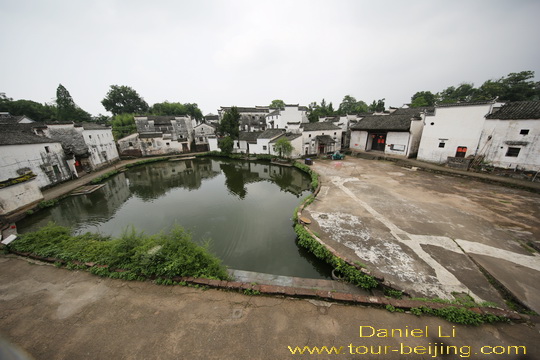
The Prime Minister’s Hall, the ancestral hall of Zhuge clan. The ancestral hall is composed of the front yard, the colonnade, central scroll and central nave, a holly place to offer sacrifices to their ancestors.
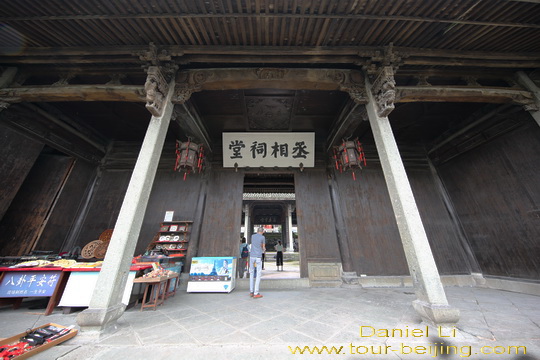
The elaborate and exquisite wooden sculptures the buildings in the Prime Minister’s Hall.
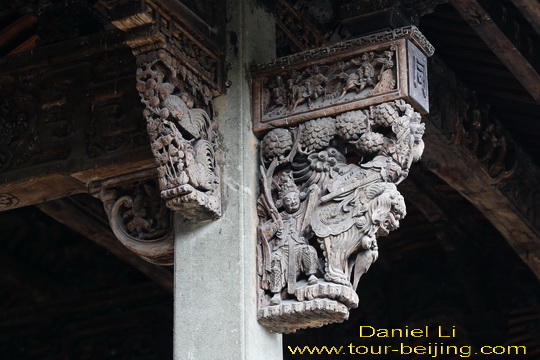
Dagong Hall is the memorial hall for Zhuge Liang. It was originally built in Ming Dynasty with 0ver 500 years old. It is the only memorial hall in Southern China to commemorate Zhuge Liang.
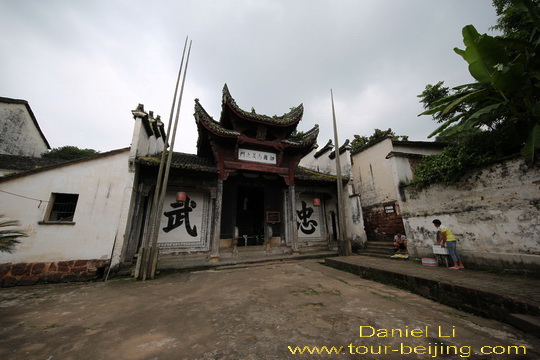
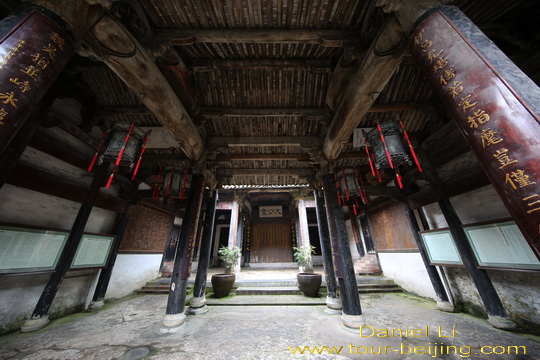
Zhuge Bagua Village is like a labyrinth with many narrow lanes and dead-end alleys.
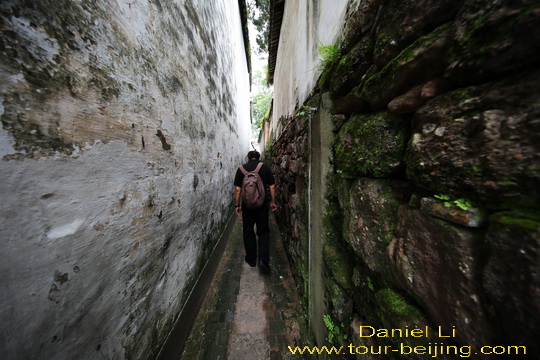
Tourism brings money to the village, which is step by step being commercialized. Lane-front stalls sell various kinds of local products and tourist stuff.
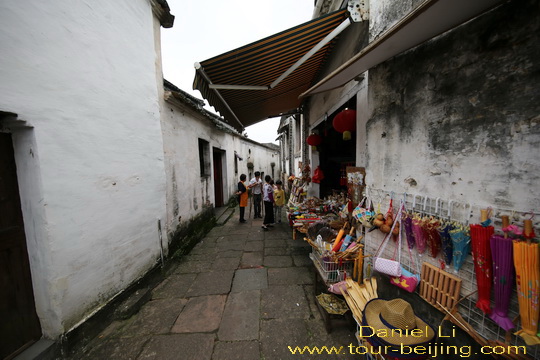
The lake is known as “Shangtang”, literally “Upper Lake”, surrounded by old wooden buildings, and white-washed houses with black tiled roofs.
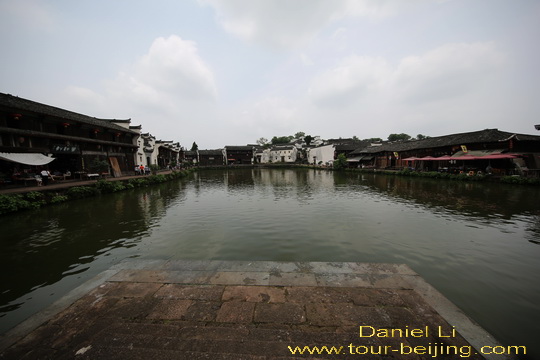
Some of the water edge houses offer dining and drinking to tourist.
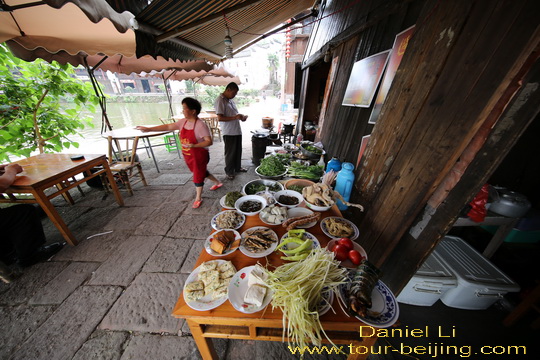
Built by the end of Ming Dynasty ( 1368 -1644), the folk house has two halls with a front yard and back yard.
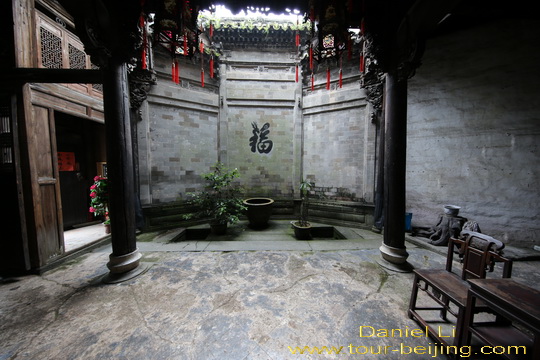
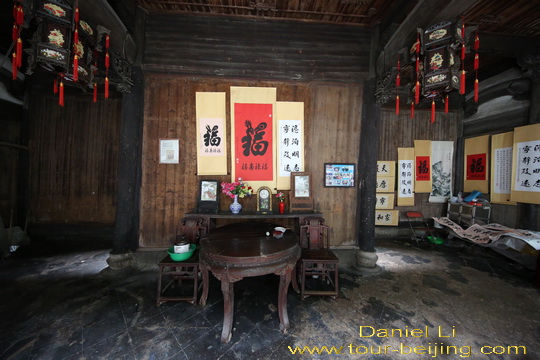
Tip: Hassle-free Hangzhou Guided Tours
If you don’t want to go the do-it-yourself route and prefer the hassle-free escorted tours, here are some options for Hangzhou Guided Tours:
Hangzhou Tour
Hangzhou 4-Day Tour Package
Hangzhou 3-Day Tour Package
Hangzhou Private Tour
Hangzhou Theme Tour
Hangzhou Side Trips
Hangzhou Car Rental with Driver
Further Readings
Top 10 Attractions in Hangzhou
Top 10 Photography Spots in Hangzhou
Night View of West Lake in Hangzhou
The Best hiking trail in Hangzhou
The best time to visit Hangzhou
Hangzhou East Railway Station
Hangzhou Airport Arrival Hall
How to Visit Feilai Peak Grottoes in Hangzhou
Where to stay in Hangzhou
Hangzhou Bicycle Hire
Wushan Night Market in Hangzhou
Pedestrian Streets in Hangzhou
Hangzhou’s Best Bars & Nightclubs
Best Way to Visit Hangzhou from Shanghai
How to Visit Grand Canal Hangzhou
How to Visit Xiling Seal Engravers’ Society
How to Visit Liuhe Pagoda
Hangzhou Tea Plantation
How to Visit Leifeng Pagoda
How to visit Hupao Spring (Tiger Spring) Hangzhou
How to Visit Yellow Dragon Cave in Hangzhou
The Best Place to View Sunrise over West Lake Hangzhou
Any question, just drop a line.





